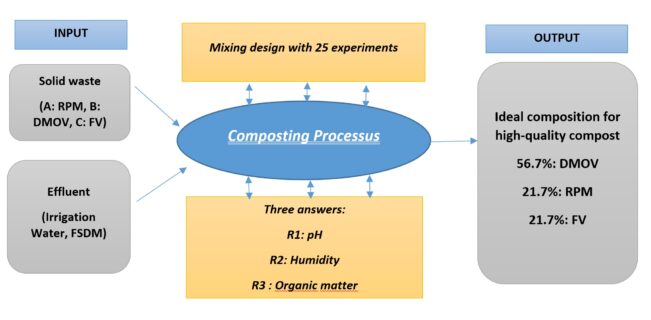Co-composting of olive mill waste cake residues (OMWC) and other wastes: Prediction and optimization using an optimal mixture design
Authors
-
Imane Mehdaoui
*
 1
1
- Faical El Ouadrhiri 1
- Saoudi Hassani El Mokhtar 1
- Rachid Mahmoud 1
- Mohamed Ben Abbou 2
- Amal Lahkimi 1
- Mustapha Taleb 1
- Zakia Rais 1
Abstract
Purpose: This work was aimed to exploit the technique of design of experiments to evaluate the olive mill waste cake
residue obtained after oil extraction while searching for an adequate composition of the initial substrate mixtures (RPM,
DMOV, FV and EB for humidification), in addition to validate it experimentally.
Method: To this end, a mixture design using an efficient experiment methodology was constructed, with the aim of
optimizing three responses of interest: pH, humidity, and organic matter of the 25 formulations.
Results: The optimal composition was comprised of organic and green household waste (56.7%), olive mill waste cake
residues (21.7%) and poultry droppings (21.7%). These analyses were followed by the evolution of some physio-chemical
parameters such as pH, temperature, organic matter, C/N ratio and polyphenols until they are stabilized. In addition, using
spectroscopic analysis, maturation and phytotoxicity tests were carried out on the germinating cress.
Conclusion: The results of this research indicated the achievement of an ideal composition of an adequate mixture that had
the characteristics of an organic amendment, non-phytotoxic and in conformity with the NFU-44-051 that led to mature
compost.
Article Highlights
- Valorization of olive mill waste cake residue was achieved after oil extraction by co-composting.
- The experimental design method was used to optimize the composition of compost.
- The elaborated compost was considered as non-phytotoxic organic amendment.




